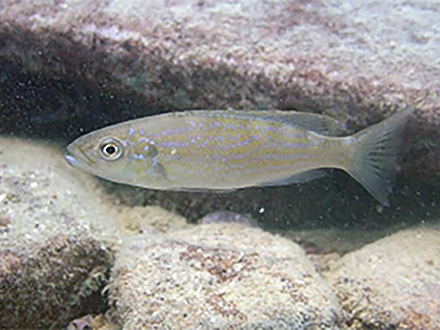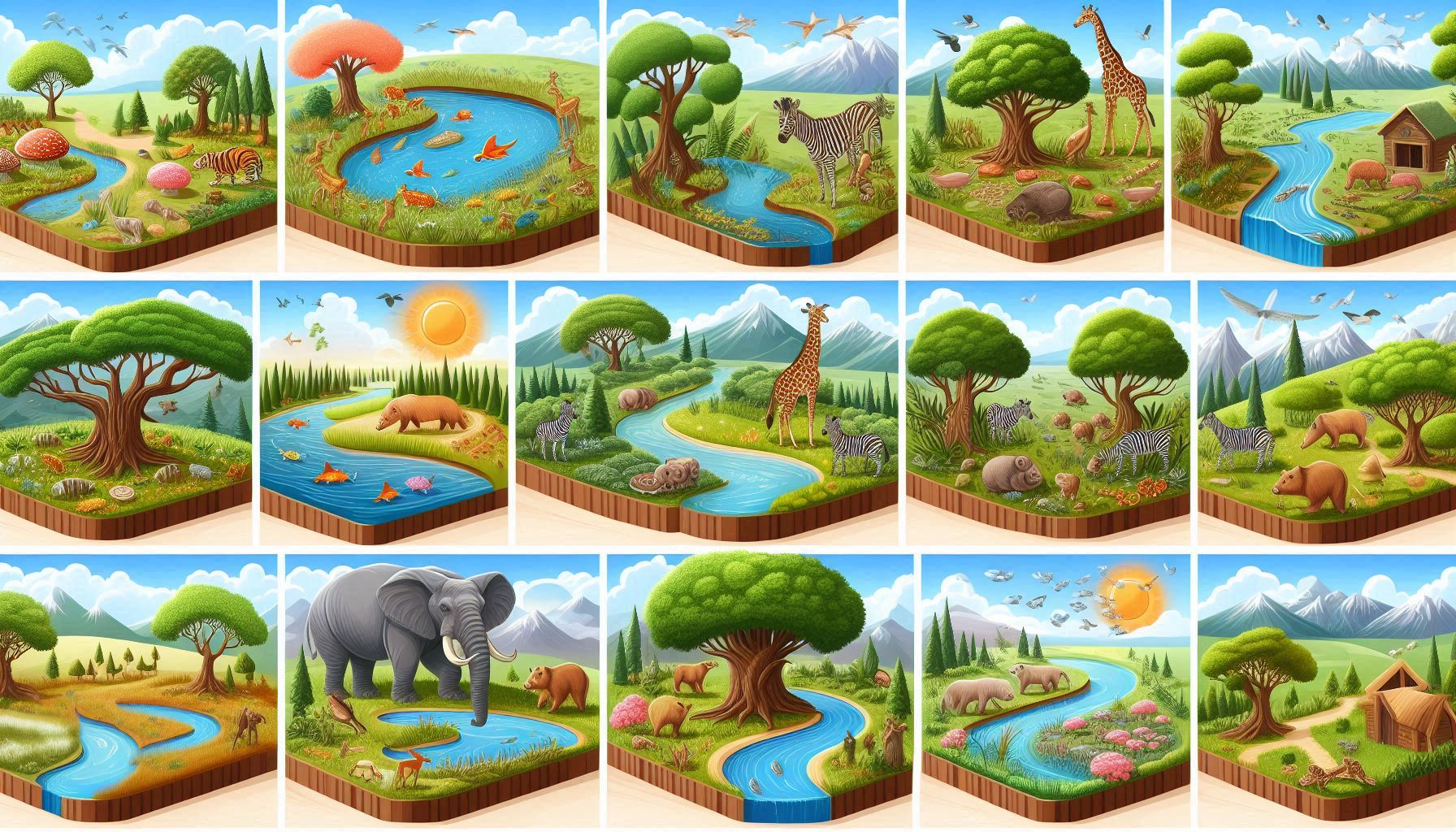While researching animal migrations, I came across the idea that wildebeests and zebras, who migrate together, coexist by eating the tips of grass blades and zebras the roots of grass so that they don’t compete for food. This method of coexistence that avoids overlapping food and other things is called niche partitioning. A niche is the range occupied by organisms that are best adapted to a habitat, including food, and is also called an ecological niche.
Coexistence by shifting locations (Habitat separation 1)
Niche division, whereby animals shift their habitats to avoid overlapping activities and food, is called habitat segregation. River fishes, char and yamame, live in separate habitats, with char in the upper reaches where the water is cool and the current is slow, and yamame in the middle reaches where the water is a little warmer and the current is faster. I have the impression that many animals and plants live in separate habitats. Colonies of plants and animal territories may also be examples of habitat segregation.

Coexistence at different times (Habitat separation ②)
Niche partitioning, where feeding times are staggered to avoid overlap in the same habitat and food, is also called habitat segregation. There seem to be patterns for shifting feeding times, such as by day and night, and by season. Diurnal and nocturnal species seem to apply to eagles and owls, who seem to separate their prey on small animals, which are their common food, by day and night. The fact that animals and plants also have seasonal activity periods can also be seen as habitat segregation for the sake of coexistence.
Coexistence by shifting food (eating separately)
Niche partitioning, where different species of food eat different foods to avoid overlap in the same habitat, is called cannibalism. There are deer that eat bamboo grass, Japanese serows that eat coniferous trees, zebras that eat grass, giraffes that eat tree leaves, paramecium that live on the water surface and eat E. coli, and green paramecium that live on the water bottom and eat yeast.

In a somewhat unusual example, scale-eating fish from Lake Tanganyika in Africa appear to be right-handed and left-handed, and use the scales on the right and left sides to distinguish between eating.

Multidimensional niche partitioning
Sado Island seems to be an island with many snakes, and seven species of snakes seem to coexist by combining multiple niche divisions (time of day, season, location, and food). The niches of the Japanese striped snake and the Japanese raccoon snake seem to overlap, but the Japanese raccoon snake tends to be more active in the fall. This combination is called multi-dimensional niche division, and when the habitat range is limited, the ingenuity for coexistence becomes more detailed.
| Time of day | Season | Location | bait | |
| striped snake | day | Spring to Autumn | lowland | frogs |
| rat snake | day | Spring to Autumn | lowland | Rodents |
| tiger keelback | day | Spring to Autumn | lowland | frogs |
| odd-tooth snake | night | Autumn | mountains | reptiles? |
| pit viper | day and night | Summer | mountains | Rodents |
| woodsnake | day and night | Spring to Autumn | lowland | Rodents |
| keelback | day and night | Autumn | lowland | Earthworms |
https://www.tsukuba-sci.com/?p=16487
Niche division, awesome
I had the image that biodiversity was something that could be achieved automatically by gathering together in a noisy manner, but it seems that there are subtle ingenuity involved. I think that niches are established as a result of the characteristics and strengths of each species of organism, but I feel that living together involves complex interactions. Niche partitioning, a mechanism for sharing limited resources, is amazing. The Earth’s ecosystem is amazing.


